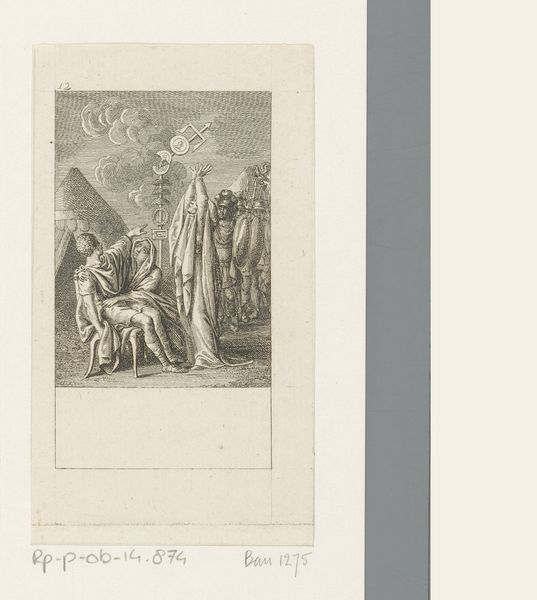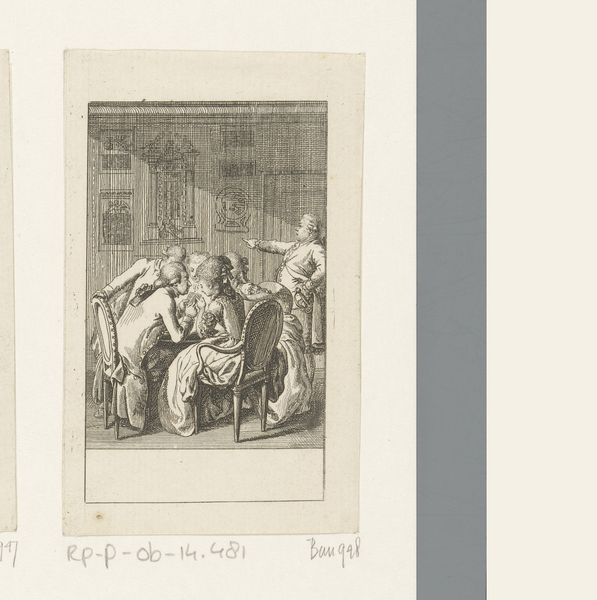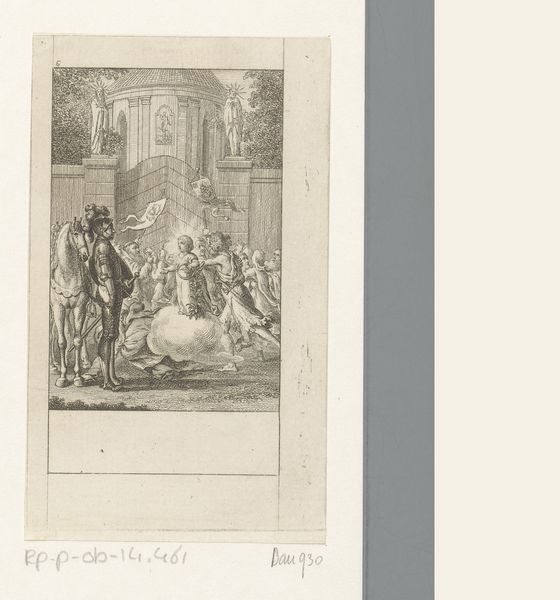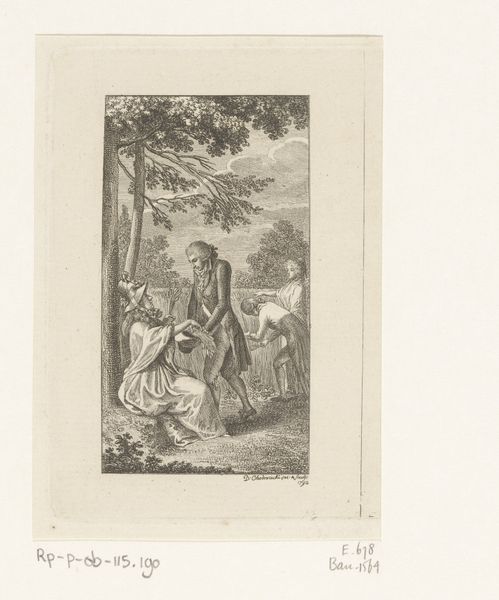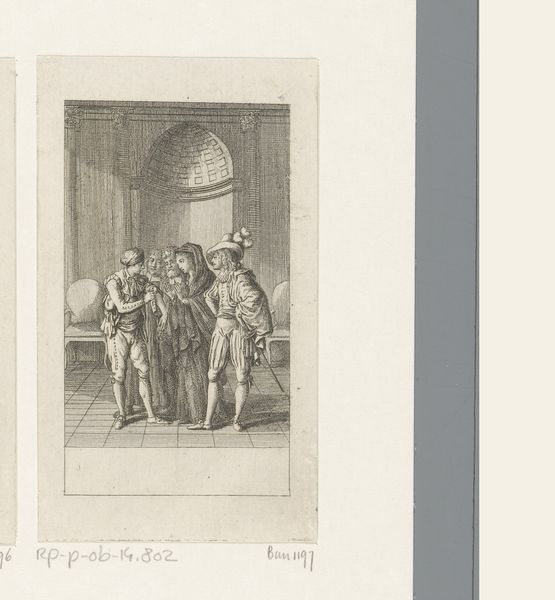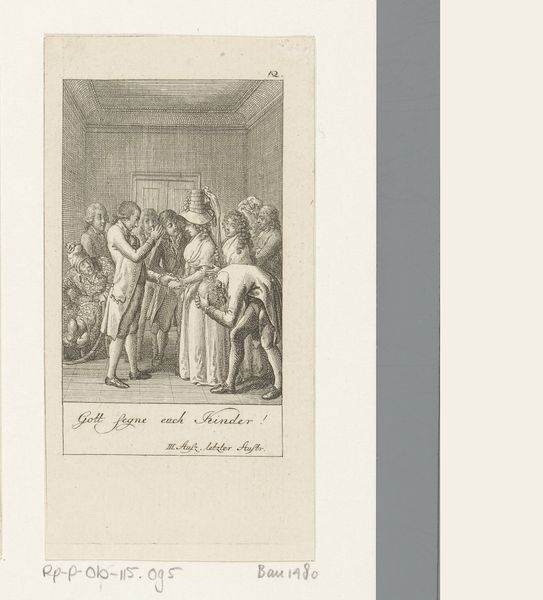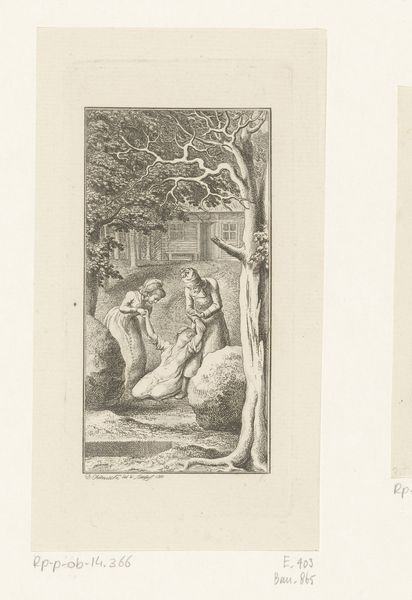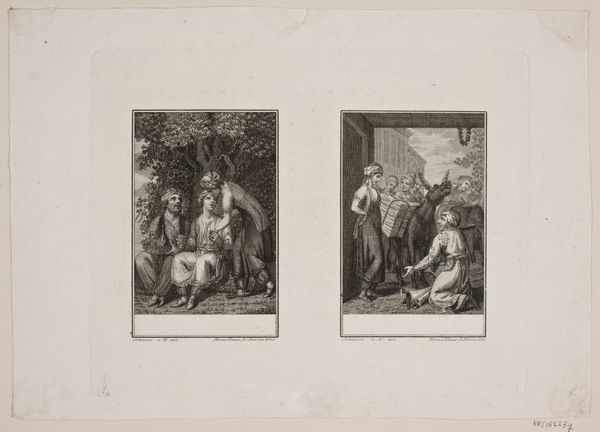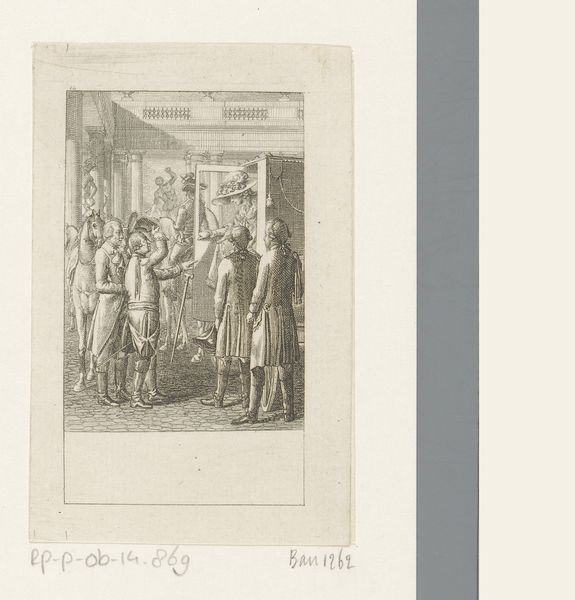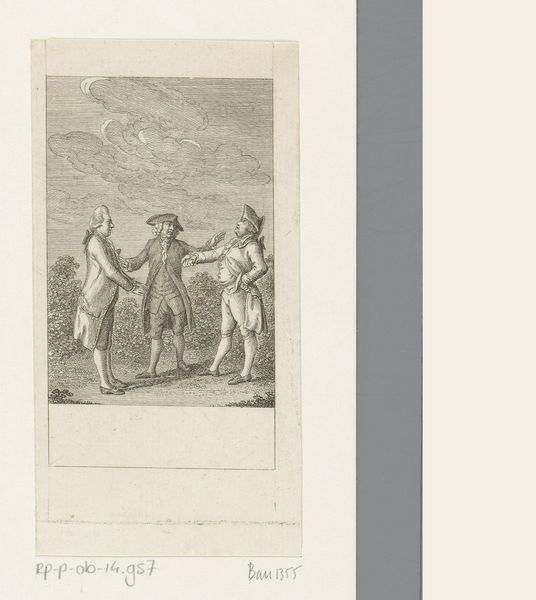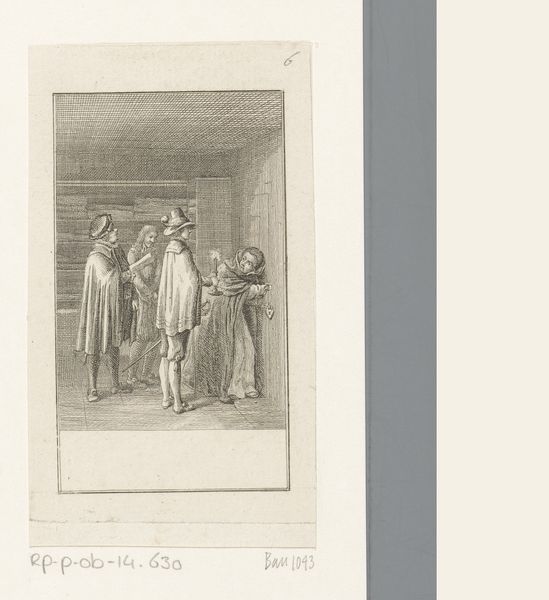
Dimensions: height 107 mm, width 63 mm
Copyright: Rijks Museum: Open Domain
Curator: I see an appeal for mercy, almost biblical in its tone. There’s a clear power dynamic at play here, wouldn't you agree? Editor: Indeed. This print, titled "Spijtbetuiging van de graaf" or "Repentance of the Count," was created by Daniel Nikolaus Chodowiecki around 1785. It's an engraving, showcasing a historical or theatrical scene, and housed here at the Rijksmuseum. Curator: Engravings always possess such detailed constraint. Notice the figures arranged in the foreground, most kneeling, beseeching a central, cloaked figure. It evokes remorse, submission… and something unsettlingly performative. Editor: I find myself questioning the narrative being presented here. Given Chodowiecki's lifetime overlapped with Enlightenment ideals, it seems reasonable to approach it with skepticism toward established hierarchies. Who holds power? Who is forced to beg? Why is their regret so public? Curator: Well, visually, Chodowiecki draws on a visual language recognizable even today, a language steeped in traditions from earlier Baroque history paintings. The carefully etched lines and balanced composition immediately signal solemnity, lending credibility to the central figure, whose gesture suggests both forgiveness and dominance. Editor: But consider that the Count’s ‘repentance’ serves a symbolic function. By publicly humiliating himself and seemingly acknowledging guilt, he manipulates perceptions and reinforces his superior status, while at the same time further oppressing those beneath him. His contrition is currency, a tool to be wielded. Curator: The print certainly opens itself to different interpretations. There are the trees in the background, evoking both nature and perhaps some sense of judgment or witness… the figures look upwards, maybe they're directing our attention to heaven as witness to repentance, or perhaps they just search for help. Editor: And yet that theatrical backdrop could just be performativity. The upshot is, I think, that this detailed scene can make us ask what the count has actually done to deserve such a show of mercy or if that show of mercy is honest in the first place. The distribution of power at the time might tell a different, less noble, tale. Curator: Indeed. I see those cultural memory echoes still rippling outwards from this image, now, into the present day. Editor: Right. Chodowiecki gives us a powerful tableau rife with conflict that forces a broader consideration of historical narratives that continue to influence perceptions of authority and agency.
Comments
No comments
Be the first to comment and join the conversation on the ultimate creative platform.

